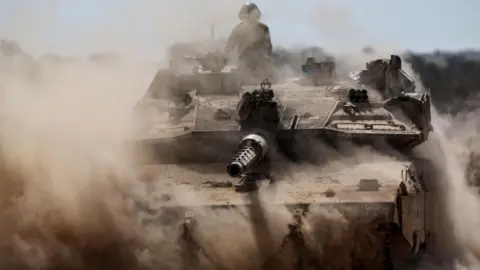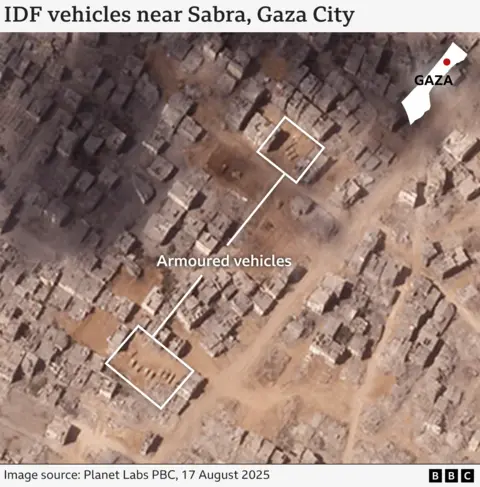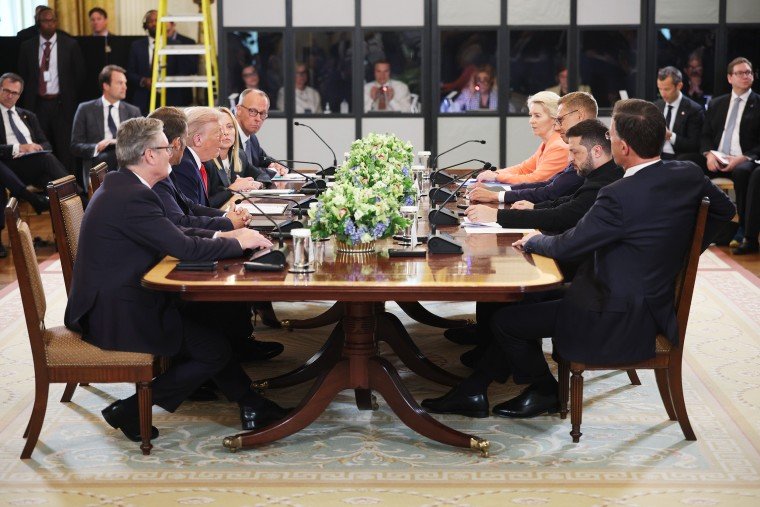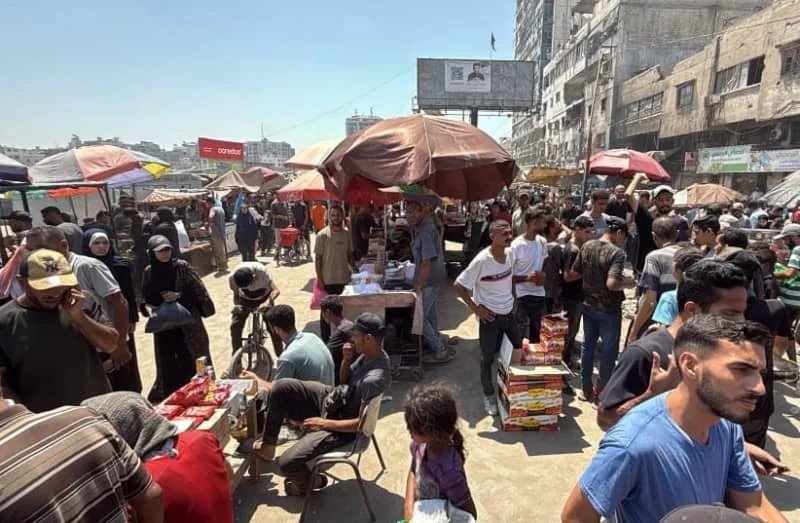
 EPA
EPAThe Israeli military says it is calling up about 60,000 reservists ahead of a planned ground offensive to capture and occupy all of Gaza City.
A military official said the reservists would report for duty in September and that most of the troops mobilised for the offensive would be active-duty personnel.
They added that troops were already operating in the Zeitoun and Jabalia areas as part of the preparations for the plan, which Defence Minister Israel Katz approved on Tuesday and will be put to the security cabinet later this week.
Hundreds of thousands of Palestinians in Gaza City are expected to be ordered to evacuate and head to shelters in southern Gaza.
Many of Israel’s allies have condemned the plan, while the UN and non-governmental organisations have warned that another offensive and further mass displacement will have a “horrific humanitarian impact” after 22 months of war.
Israel’s government announced its intention to conquer the entire Gaza Strip after indirect talks with Hamas on a ceasefire and hostage release deal broke down last month.
Regional mediators are trying to secure an agreement before the offensive begins and have presented a new proposal for a 60-day truce and the release of around half of the 50 hostages still held in Gaza, which Hamas said it had accepted on Monday.
Israel has not yet submitted a formal response, but Israeli officials insisted on Tuesday that they would no longer accept a partial deal and demanded a comprehensive one that would see all the hostages released. Only 20 of the hostages are believed to be alive.
The Israel Defense Forces (IDF) said in a statement that orders calling up 60,000 reservists were issued on Wednesday as part of the preparations for “the next phase of Operation Gideon’s Chariots” – the offensive that it launched in May.
In addition, 20,000 reservists who had already been called up would receive a notice extending their current orders, it added.
The Israeli military official said senior commanders had approved the plan for a “gradual” and “precise” operation in and around Gaza City, and that the chief of staff, Lt Gen Eyal Zamir, was expected to finalise them in the coming days.
Five divisions are expected to take part in the offensive, according to the official.
The newspaper Haaretz quoted Defence Minister Katz as saying on Tuesday: “Once the operation is completed, Gaza will change its face and will no longer look as it did in the past.”
He also reportedly approved a plan to “accommodate” Gaza City residents in the south of the territory, including the coastal al-Mawasi area, where the military has begun establishing additional food distribution points and field hospitals.
Prime Minister Benjamin Netanyahu has said the military’s objectives are to secure the release of all the hostages held by Hamas and “complete the defeat” of the Palestinian armed group.
The IDF also announced on Wednesday that the Givati Brigade had resumed operations in the northern town of Jabalia and on the outskirts of Gaza City, where it said they were “dismantling military infrastructures above and below ground, eliminating terrorists, and consolidating operational control”.
It said civilians were being told to move south for their safety “to mitigate the risk of harm”.
A spokesman for Gaza’s Hamas-run Civil Defence agency, Mahmoud Bassal, told news agency AFP on Tuesday that the situation was “very dangerous and unbearable” in the city’s Zeitoun and Sabra neighbourhoods, where he said “shelling continues intermittently”.
The agency said Israeli strikes and fire had killed 21 people across Gaza on Wednesday.
Palestinian news agency Wafa reported that three children and their parents were killed when a house in the Shati refugee camp, west of Gaza City, was bombed.


UN agencies and NGOs have warned of the humanitarian impact of a new offensive.
“The Israeli plan to intensify military operations in Gaza City will have a horrific humanitarian impact on people already exhausted, malnourished, bereaved, displaced, and deprived of basics needed for survival,” they said in a joint statement on Monday.
“Forcing hundreds of thousands to move south is a recipe for further disaster and could amount to forcible transfer.”
They also said the areas of the south where displaced residents were expected to move were “overcrowded and ill-equipped to sustain human survival at scale”.
“Southern hospitals are operating at several times their capacity, and taking on patients from the north would have life-threatening consequences.”
The Israeli military launched a campaign in Gaza in response to the Hamas-led attack on southern Israel on 7 October 2023, in which about 1,200 people were killed and 251 others were taken hostage.
At least 62,122 people have been killed in Gaza since then, according to the territory’s Hamas-run health ministry.
Most of Gaza’s population has also been displaced multiple times; more than 90% of homes are estimated to be damaged or destroyed; the healthcare, water, sanitation and hygiene systems have collapsed; and UN-backed global food security experts have warned that the “worst-case scenario of famine is currently playing out” due to food shortages.








